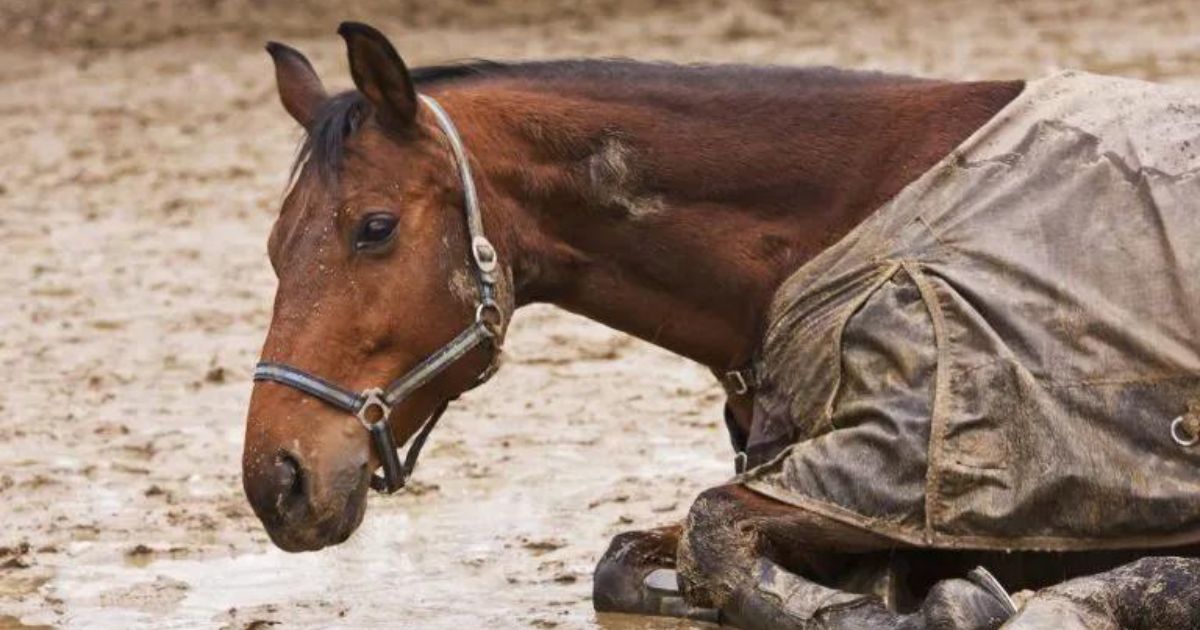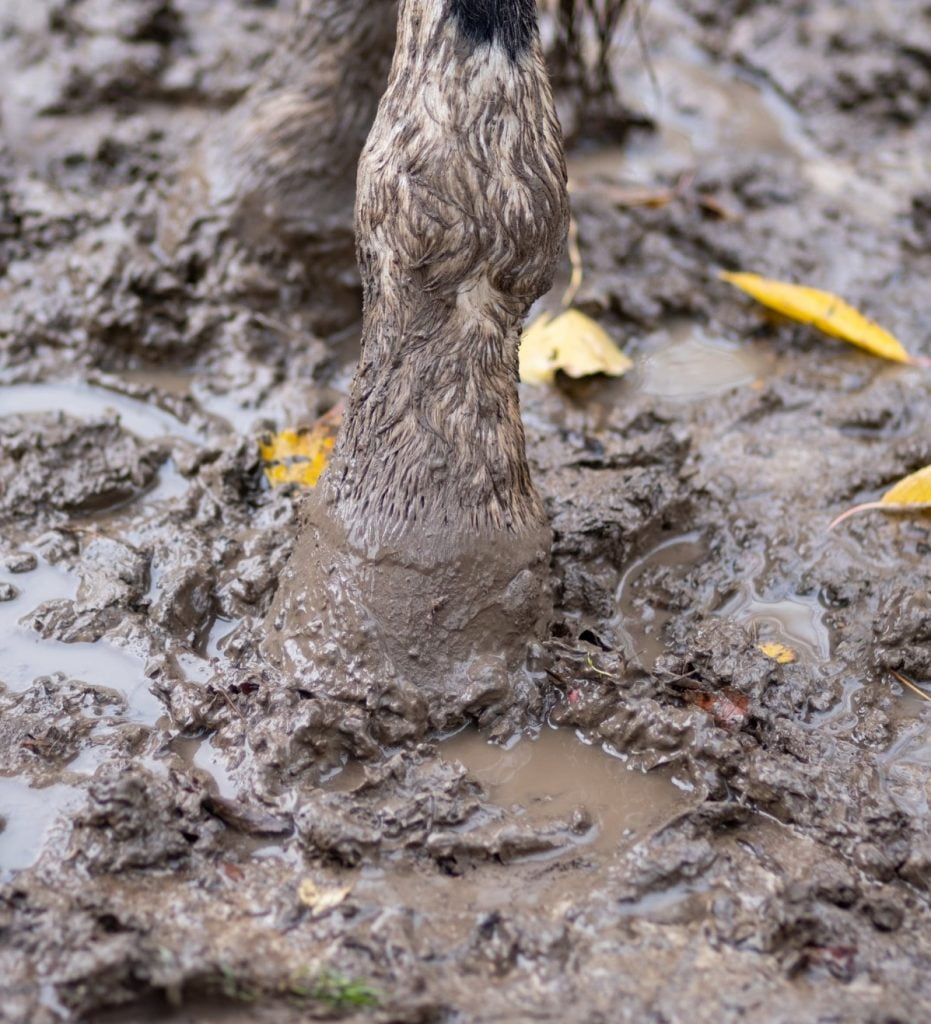Menu

Autumn, winter, and the first part of spring mean mud up over the fetlocks and ankles for most horses and their owners. It can certainly cause frustrations. Interestingly, we have widely differing views on how and to what extent one should tackle the tidiness – or should we call it muddiness. Here are a few different suggestions, which we horse people surely have our own opinions about. What do you prefer?
Often, it is at the gate of the paddock where the mud situation is the worst. The horse may have dry and clean legs while out in the paddock, but when it is to be brought in, it cannot avoid getting its legs muddied. The solution for some might be to create an extra gate or two somewhere else in the fence. That way, one can alternate between gates when letting horses out and in, thus allowing the mud to dry up a bit. If it is to be worthwhile to create an extra gate, the paddock must be of a certain size, and it requires that part of the fence does not border another paddock.
Another option – which is also the most comprehensive – is to improve the paddock's surface. This can be done in places or across the entire paddock, depending on where the mud is. One option is to have stone dust or stabilized gravel spread on the part of the paddock that contains deep mud. However, do not expect to get a completely dry paddock. Water will still settle on top of the extra layer because the paddock is not drained, but the horses will not sink as far down. Most importantly, remember that these are periodic solutions that often only last a couple of seasons.
You can also have some kind of plastic grid laid out with a layer of gravel over the most sludgy square meters. That way, the horses will walk on top of the mud and will not sink down. You can also lay tiles or asphalt, but then the surface can quickly become slippery.
Another thing you can do is to place the horses' water troughs and roughage far away from the muddiest part of the paddock. Preferably right down to the other end of the paddock – and ideally on an elevation, so this area does not become muddy. In this way, you force the horses to use the entire paddock area, so it's not always the same square meters that get trampled during the day. Often it's about getting all the "fun" far away from the gate, as there will inevitably always be mud where the horses walk the most.

When the mud becomes so deep that it goes over the horse's fetlocks, one should really make sure that there is also a dry place in the paddock where the horse can stand. Photo: Shutterstock.
Many horse owners feel compelled to hose down the horse's muddy legs with a water hose. It's effective, but you can also risk doing more harm than good because you make the legs even more moist than they might have been already. If you rub and wash too much, you can create tears in the horse's skin, and that greatly increases the risk of, among other things, mud fever. Therefore, it is best only to hose the legs if they are already thoroughly soaked with mud and stick to just brushing them if they are (partially) dry. Often you can remove the last of it after the ride is over. If you have also clipped your horse, it is even faster to brush the dirt away.
The last option is to invest in a set of paddock boots or mud fever boots, which are designed to keep the mud completely away to avoid mud fever. When the horse wears the boots, it avoids getting wet and dirty legs. However, you cannot avoid buying two sets for both front and hind legs, so you can wash the used pair and have some dry ones to put on. Although it is effective, it is also an expensive solution, and you must be aware that the horse often should not wear them for more than 12 hours at a time. And then you should probably not expect that even a pair of paddock boots can keep the bacteria and dirt completely out if there are many centimeters of mud.